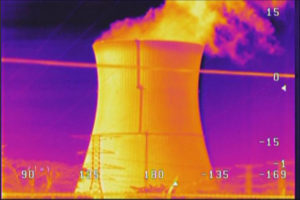Thermal duty evaluation
When facing a problem related to cooling or heating within an industrial process, there are three factors that must be handled at first, in order to ensure some fundamental points to start with. The first one involves the kind of cooling / heating fluid to employ:
- Air
- Water
- Steam
- Diathermic oil
REQUIRED TEMPERATURE LEVEL
The second one, as already seen also in the previous Glossary section, is to clearly understand which one is the output temperature level required by the process, in order to correctly identify the type of thermal machine to employ and, within the kind of machine selected, how demanding its performance should be.
THERMAL DUTY REQUIRED
The third one is the amount of energy that we’ll have to dissipate or to supply the process. Customers have often very clear ideas on which kind of cooling / heating effect they need for their own processes, and as well a fairly clear idea of the temperature level they must reach to ensure quality standards in their production.
The most challenging part is to define the thermal duty, in other words the thermal management capacity required.
In fact, when questioned about the amount of heating / cooling KW that must be dissipated / supplied, most of the times the answer of the customers is a generic ‘I don’t know’.
When the customer is a plant or machinery manufacturer, this information is clearly quite defined already.
But dealing with an end-user, the answer will be as the above, ‘I don’t know’.
In this circumstances, years of experience in Tempco allowed us to develop an evaluation strategy, which I will try to share at least in its main terms. The evaluation of the thermal duty is indeed the most important and delicate step, because it determines the selection of the thermal machine and the selection of the components composing the cooling / heating system. A mistake at this point will have exponential repercussions upon the overall process.
In addition to a resounding mistake in the evaluation of the thermal duty of the machine, this mistake also entails a wrong evaluation of the flow rate of the cooling / heating fluids, causing a wrong sizing of pumps and fans but also of the related pipes, that can come out too small and avoiding any possible correction once they are done.
In conclusion, a very costly vicious circle gets triggered.
In case of any doubt, ask an expert, that will be surely able to reassure you on the choices you’ve made.
If you still are not sure about it, try to gather as much data as possible in order to compare different verification methods of the thermal duty.
But let’s go right to the point: we eventually have to define the quantity of product that is produced on the customer’s line, and which has to be cooled / heated. Now, taking for sure that the end-user knows very well the temperature level that he wants to achieve, we proceed to determine the specific heat of the product. Multiplying it by the production output per hour and the thermal gap to achieve we can obtain a more clear idea of the thermal duty we need.
Furthermore, potential thermal losses or contributions from other machinery must be added, that may come from the production or the handling of the product, conductive or inductive effects. These are for sure technical aspects, but overall these are some checks that can be done with a one-day on-site measurements, using some proximity thermometers and with a little of patience.
At this point, the trick is done, we have finally the ‘magic’ number.
Warning: at this point don’t be too much enthusiasts, and if it’s possible let’s make a further check, even comparing further data available, in order to obtain congruent results.
It happens very often that the customer, before approaching a brand new heating or cooling system, has previous experiences with some other older plants or systems. Making a check with these ones it is also possible to obtain a final confirmation of the estimations carried out.
Never be ashamed of asking, even with the risk to give customers a third degree!
A PRACTICAL EXAMPLE
- Customer: steel forging
- Application: quenching of bath tempering in production
Defined data:
- Thermal process: cooling
- Cooling fluid: quenching oil
- Temperature levels: incoming steel at 900° C, that must be rapidly cooled at a temperature of 80/90° C.
The tempering and quenching process is very well known by the customer, who knows very well how to shake the fluid (oil) to cool down workpieces.
But when the question is ‘ How many kCal have to be dissipated’?, there is no answer.
Let’s then find out what is the production per hour, which is how many quintals of steel they are willing to treat per hour.
50 quintals.
That’s it, we almost have everything we need.
kCal amount = production per hour * thermal gap * specific heat
Q = 5000 (kg/h) * (900-90)(°C) * 0,16716 (Kcal/kg°C) = 676.990 Kcal/h
A final note: verify the contemporaneity index of manufacturing processes. In case there are more processes in parallel, it is not assumed they are going on at the same time, or viceversa.
This is an essential factor, not only for a precise evaluation of the thermal capacity of our thermal machine or the cooling / heating plant, but also because the downtimes can be used to collect cold or heat to be employed during the maximum demanding moments, furthermore increasing the overall efficiency of the system.
On the following, we’ll also discuss more in depth how it is possible to take advantage of this eventuality for energy saving purposes.




 Back to index
Back to index Download the complete book
Download the complete book